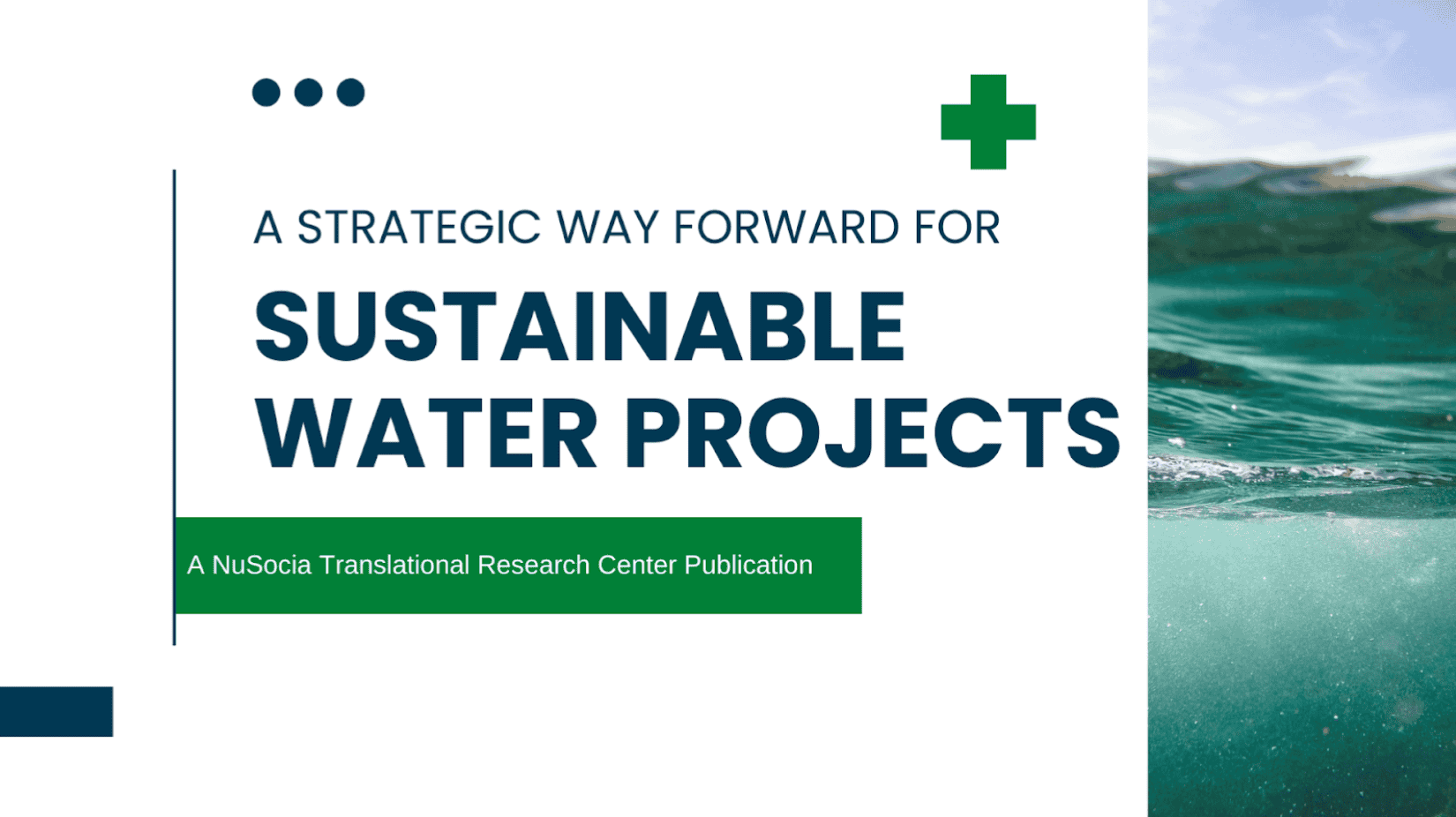Access to safe water and sanitation remains a critical issue in India, where out of its population of 1.4 billion, 35 million people lack access to safe water, and 678 million people are deprived of safe toilet facilities. This crisis is compounded by extreme water stress, contaminated surface water, and inadequate piped water supply, which affect vast swathes of the country. Furthermore, climate change exacerbates these challenges, manifesting in severe weather events like floods and droughts Parekh, 2013).
The Intergovernmental Panel on Climate Change (IPCC) highlights that rising global temperatures increase atmospheric moisture capacity, leading to more frequent and intense storms and heavy rains, while also causing prolonged dry spells due to higher evaporation rates and altered global weather patterns. Every year, as the globe gets hotter, these wildly shifting global patterns of heavy drain and prolonged drought will only get worse. Water-related disasters have dominated the list of natural disasters over the past 50 years, accounting for 70 percent of all deaths linked to such calamities (UN). These dynamics highlight the urgent need to address water challenges in India and to find a way to create sustainable water ecosystems.
To mitigate these challenges, private industries have stepped forward in implementing water programs such as Swachh Aadat Swachh Bharat Program by HUL to promote good health and hygiene practices, Prefab Toilets in Railway Stations by CCL (Central Coalfield Ltd providing prefabricated toilets in railway circulation area and Swachh Ghar Mission by VST industries Ltd which helps providing toilets for individuals, villages and communities (CSR BOX). CSR funding in environment, sustainability, sanitation, and safe drinking water has increased dramatically from 2014 to 2019, at around Rs. 5,018 crores in environment and Rs. 824 crores in safe drinking water in India (Fernandes, 2021). These span interventions such as installing RO plants in communities, rainwater harvesting systems, and other WASH-related interventions. However, most projects tend to be short-term and don’t have methods of integration into the community. Designing a program with long-term sustainability, self-sufficiency, and stakeholder/community buy-in is a common challenge among development projects. Water, however, can present some additional nuanced challenges. Everything to do with water is a culturally integrated phenomenon, from sanitation to who goes to fetch water, to who drinks water first in the household is all part of a social fabric, especially in rural areas of India.
As GoI begins to further incentivize the private sector into the water development world, understanding the why and the how of getting involved become imperative. NuSocia has had the privilege of working with multiple organizations on evaluating their CSR water projects and, in this article, we shed light on the different pull and push factors that these organizations faced when engaging in these projects and how to mitigate these challenges in the process.
Pull factors
Pull factors describe some of the reasons private organizations choose to implement water development projects or integrate better water practices in their operations and processes.
Brand Image & Renewal of Required Resource: Investing in community projects focused on water can enhance a company’s brand value, reinforce market positioning, and demonstrate a commitment to water sustainability. This is an important factor as higher end Indian consumers become more environmentally conscious and demand more information about their products and the companies that manufacture and distribute them. This is especially true for companies selling water purification systems, bottled water, or water-efficient appliances.
Risk Mitigation: Companies operating chemical and power plants often engage in water-related projects to mitigate the negative environmental impacts of their operations. This involvement helps the community by providing a safer environment and showcases the companies’ responsible business behavior, contributing to restoring ecological balance. Currently there aren’t any regulations surrounding the proper disposal of hazardous materials into water ecosystems, but there has been an increased scrutiny on sustainable operations of manufacturers. Companies that choose responsible and ethical business practices will remain ahead of the curve as policies surrounding water and biodiversity protections come into play.
Increase in Government Incentives & Opportunities: The increase in Public-Private Partnerships (PPPs) in water projects highlights the government’s support for private sector involvement. During the 1990s and the early 2000s, only about 40% of the attempted projects reached the contract award stage. This proportion has significantly increased post-2005, with a consistent rise in the number of successful contracts awarded (13 contracts awarded in urban water supply services) ( Water and sanitation report, 2011) . These partnerships allow private companies to share their technical expertise while utilizing government funding, and offsetting some risk.
Water Add-on Projects with Current CSR Community Projects: Organizations directly working within communities may identify an urgent need for water-related projects. Recognizing and addressing these needs can drive companies to invest in water-related projects, fulfilling a critical community requirement and enhancing the impact of their ongoing CSR initiatives.
A Ripe Area for Impact Investing: India’s new platform on investing in water infrastructure and other water resource opportunities has created a new opportunity for private sector investors to fund public projects with limited risk and additional return (PM, Gati Shakti). This aims to rectify the supply and demand gap in financing water projects even though ground teams, organizations, and projects exist (WEF, 2021).
New Water Neutrality Guidelines: In 2023, Niti Ayog introduced a standard guideline on water neutrality that allows industry to now be more involved and cognizant on how they use water in their operations, how they minimize risk to their community, offset any usage, and most important measure and report this entire process. This helps improve their own operational efficiency, incorporate ESG strategies, and reach and contribute to loftier targets such as the SDGs. Although not a requirement from the GoI as of yet, there is definite movement towards mandates (CSR mandates) and stricter reporting (required impact assessments for specific projects and BRSR) from the private sector regarding sustainability goals in recent years.
Push factors
Push factors describe some of the challenges that organizations face in implementing water development projects or integrating better water practices into their operations and processes.
Land Acquisition Challenges: Water projects typically require land for infrastructure development, such as building water treatment plants or laying pipelines. Acquiring land can be contentious, especially when it involves displacing farmers or communities. This process can lead to resistance, delays, and increased project costs. Farmers may be reluctant to relinquish land if they perceive insufficient benefits or may withdraw consent later, complicating project timelines and risking failure.
Community Engagement Complexity: Water projects necessitate extensive community involvement for successful implementation. This engagement is time-consuming and requires building trust and awareness among local stakeholders. Without effective communication and participation, communities may feel coerced or uninformed, leading to potential withdrawal of support and project disruption. Corporates, wary of unpredictable timelines and community resistance, may hesitate to invest in projects with prolonged engagement requirements. Poor community relations or concealed issues can undermine project quality and damage a funder’s reputation if problems arise after implementation.
Stakeholders & Power Dynamics: Conflict can arise over vendor selection, especially if local communities are not involved in decision-making processes. Incompatible working styles or disputes may escalate, impacting project efficiency and community relations. Political dynamics, particularly in forming local committees or involving different stakeholder groups like Self-Help Groups (SHGs), can introduce additional complexities and resistance from established power structures.
These challenges are complex on the ground but can be mitigated through proper lead time and on ground research. Every social development project requires interdisciplinary, integrated research to gain community confidence and trust. Without community involvement, collaboration, and decision making, most projects never see success. More about how to achieve this in the next section.
Climate Dependencies: Maintaining long-term project sustainability is crucial but challenging. External factors like climate variability, such as droughts affecting water availability post-construction, can further jeopardize project success and investor confidence. Seasonal variations, such as heavy rains damaging infrastructure, can disrupt schedules and increase costs.
However, private companies often possess the technological expertise and flexibility needed to innovate new solutions to circumvent these risks. These innovations can range from advanced water purification technologies to efficient water distribution systems, helping communities cope with changing environmental conditions.
Economic Viability and Returns: The particular cost structure of water supply limits competition and invites government intervention. Water is heavy, and local water infrastructures are elaborate, long-lived, and capital-intensive. Private sector involvement in water projects requires a clear path to economic viability and returns on investment. Realistic pricing mechanisms for water services are essential to ensure profitability. Unclear or unfavorable pricing structures may deter private entities, as they require predictable revenue streams to justify initial investments and ongoing operational costs.
Public Private Partnerships could mitigate these challenges by offsetting pricing and costing risks to the government. This also minimizes risks in entanglements with regulations, land acquisition and other risk factors. Public Private Partnerships have slowly seen success in specific sectors and offer new opportunities and avenues for the private sector to expand reach.
Mitigating Challenges on the Ground
Case 1. Organization X, a large MNC working in the sector of water, decided to implement a CSR project aimed to improve water availability in a community chosen by them. Their mission, mission, values, and brand image all aligned with the chosen project, making it important for the project to be done well and show a positive return for the community.
NuSocia had the privilege of running their impact assessment and documenting their strategic implementation approach, strong impact outcomes, and strategy on long-term sustainability.
Picture: NuSocia team talking to community members
During the assessment of the water needs of the area, the organization tried to understand the community and found that the village lacked proper drinking water. Women had to travel 3-4 kilometers to fetch water, and men spent a third of their daily income on travel for work. They also realized that project implementation would require farmers’ land and that the farmers were emotionally attached to their land. If they wanted to utilize the land, they needed the farmers to be involved, supportive of the cause, and benefited in some way to mitigate any uncertainty in the implementation process. To build community participation, they first listened to the challenges faced by the villagers and sought their input on potential solutions.
Recognizing water scarcity as a primary issue, Organization X initiated a water conservation and watershed management program after earning the community’s trust through iterative group sessions. They employed only local men and women for infrastructure development, which reduced travel costs for work and provided employment. By addressing the need for water and economic issues such as expensive commutes, the project tackled two significant community problems simultaneously.
Regular interaction between the local community and the implementation team, along with visible progress on the project, helped increase the community’s trust. The locals also gained a better understanding of the project’s importance and scope, as well as the infrastructure being built, which allowed for handover to the community. By choosing a strategic approach through integrated community involvement, this program resolved multiple community problems and fostered project ownership, reducing the chances of farmers backing out or neglecting the infrastructure. This approach mitigated land acquisition, community engagement, and power dynamic complexities to implement a successful project.
Case 2. Organization Y had been dedicated to enhancing farmers’ income by diversifying income sources, training in advanced agricultural practices, and improving marketing strategies by forming Self-Help Groups (SHGs) and Farmer Producer Organizations (FPOs). During the initial phases of the project, Organization Y identified a significant barrier to achieving their agricultural goals: water scarcity. In the Tadaja block of Bhavnagar district, smallholder farmers with 2-5 acres of land faced seawater ingression, high salinity levels, erratic rainfall, and insufficient agricultural resources. Despite various efforts, without addressing the fundamental issue of water management, their impact on agricultural productivity would have remained limited. Recognizing this, Organization Y pivoted to launch a watershed management project alongside their pre-existing interventions, addressing the urgent need for water solutions to bolster their agricultural interventions. Agriculture in India faces substantial challenges due to water management issues, and Organization Y’s on-ground experience underscored this reality.
Organization Y leveraged the Manar Centre, a vital community resource with deep-rooted connections and collaborations with local social and government organizations, to mitigate community engagement complexities. The Centre’s social capital played a crucial role in gaining community trust and facilitating the project’s implementation.
Picture: NuSocia team visiting the project site
The Manar Centre initiated the project on barren land with scarce irrigation water, developing a 4-acre water pond to ensure a consistent supply of irrigation water and recharge wells. Today, the Centre operates entirely on a drip irrigation system, highlighting the transformative impact of water conservation and of private sector funding and innovation on the ground. Established in 2017 through a collaboration between the Department of Agriculture and Cooperation, Government of Gujarat, and Private Industries Limited, the Centre introduced innovative agri-horticulture techniques, mobilized farmers, and provided essential training. This initiative not only addressed the primary agricultural issues through various means but also addressed the factors affecting it which was water management. By recognizing the community’s need for water management and responding with targeted interventions, Organization Y demonstrated how a small water project could catalyze significant positive change. The strategic integration of government and local social players further ensured the project’s sustainability and community trust, ultimately enhancing the overall impact of their agricultural initiatives.
Organization Y’s ability to adapt, address water scarcity, and utilize innovations in water management within their broader agricultural project underscores the importance of understanding and responding to community needs. Their strategic shift to water management, supported by strong community connections and social capital, significantly improved the project’s outcomes. This implementation approach shows if the stakeholders are managed well then water projects can be smoothly implemented while mitigating complex push factors.
Way Forward: Building Sustainable Water Projects
There are many reasons for the private industries to be involved in water development and with more government incentives and guidelines, there is an advantage to enter. However, just as any social development sector, it is strife with cultural and social power dynamics that need to be considered before designing and implementing anything on ground. Understanding and integrating cultural aspects into project design can foster community buy-in and long-term success. NITI Aayog’s new definitions and guidelines may provide clarity and direction for private players, encouraging more investment in water projects along with public-private partnerships (PPPs) offering an opportunity for private organizations to offset risks while still entering the space of water development, maximizing social capital and project impact. By leveraging these push factors as strengths, private companies can play a pivotal role in addressing India’s water challenges and promoting sustainable water ecosystems.
References
- Trends in Private Sector Participation in the Indian Water Sector: A Critical Review, 2011: Water and sanitation program report. Trends in PSP in Indian water sector (Detailed)013.pdf (mohua.gov.in)
- How CSR collaborations propel community-based water projects – The CSR Journal ARCHIVED, (Fernandis, 2021), https://thecsrjournal.in/csr-collaborations-water-community-projects-india/
- UN: Water – at the center of the climate crisis (https://www.un.org/en/climatechange/science/climate-issues/water)
- The National Bureau of Asian Research, India’s Water Crisis, 2013, https://www.nbr.org/publication/indias-water-crisis-causes-and-cures/
- The potential of the private sector in combating water scarcity: The economics, (Debaere, Kapral, 2021), https://www.sciencedirect.com/science/article/pii/S2468312421000079
- Dissolving India’s water woes demands public-private partnerships, December 4, 2021: https://timesofindia.indiatimes.com/blogs/voices/dissolving-indias-water-woes-demands-public-private-partnerships/
- CSR BOX: https://csrbox.org/Impact/description/India_CSR_news_Top-10-Water,-Sanitation-and-Hygiene-based-Projects-Though-CSR-in-India_1335
- PM Gati Shakti: https://indiainvestmentgrid.gov.in/sectors/water-resources
- 4 ways to scale up finance for India’s water sector, World Economic Forum, 2021: https://www.weforum.org/agenda/2021/05/4-ways-to-scale-up-finance-for-indias-water-sector
- India’s Water Crisis, Parekh, 2013: https://www.nbr.org/publication/indias-water-crisis-causes-and-cures/




